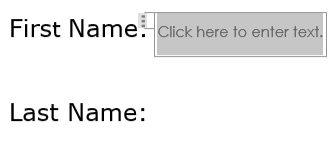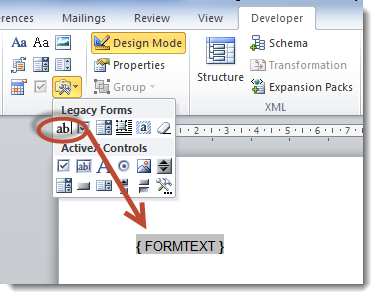

- USING FORM FIELDS IN WORD HOW TO
- USING FORM FIELDS IN WORD SOFTWARE

Text and instructions outside of form controls can be more easily read in an HTML form than in a Word form. If you have a lot of text or instructions you might want to consider creating an accessible HTML form instead of a Word form.
This may include instructions on how to fill out the form, headings, disclaimers, etc. The Customize Ribbon dialog box closes, focus returns to the document area, and the Developer tab is now shown on the upper part of the ribbon just to the right of the View tab.Ī form may have extra text that is not directly related to entering data.
Press ENTER to activate the OK button. Press DOWN ARROW until you find the check box for Developer, and then press SPACEBAR to check it. It is open, showing the groups on the lower ribbon for the Home tab that are visible (each with their own check box). Focus initially lands on the check box within the tree view for the home tab. Press TAB to move to the next control. You do not want to change this, but verify that Main Tabs is selected. Press ALT+B to move to the Customize the Ribbon combo box. Press C to move focus to the Customize Ribbon category. The Options dialog box opens with focus on the General tab. The dialog box closes, and the changes are saved. Press ALT+D to check the check box "Show Developer Tab in the Ribbon," which is NOT checked by default. The Options dialog box opens with focus on the Popular tab. Press ALT+F to open the Office button menu. If the Developer tab is not showing on the ribbon, this needs to be turned on. The menus close, and the Forms toolbar appears. Next, press DOWN ARROW to select Forms. Press ALT+V to open the View menu on the menu bar. Since this is not among the standard toolbars visible when Word starts, you need to open the Forms toolbar. To create a form in Word 2003, you use the Forms toolbar. Help Key (F1) help can be used to give additional instructions. The Add-Help Text that appears on the status bar each time focus moves into a field makes these forms readily accessible by a person who is blind or who has low vision using JAWS® screen reading software or MAGic® screen magnification software. With the instructions below, you can develop easy-to-use forms in Microsoft® Word 2003, 2007, and 2010. Accessible Forms in Microsoft Word Creating Accessible Forms in Microsoft Word Introduction






 0 kommentar(er)
0 kommentar(er)
